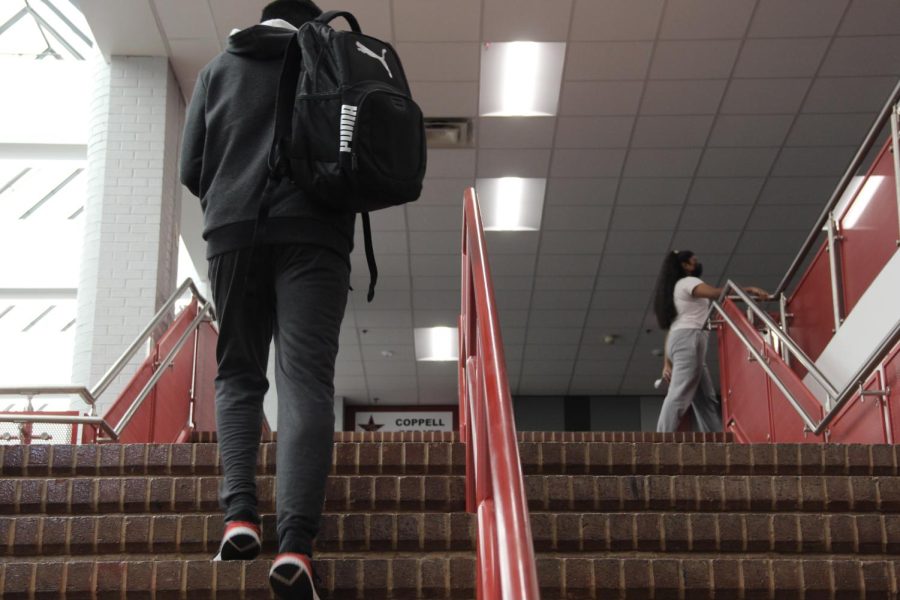CHS strategizes to combat tardiness
Coppell High School implemented a late arrival system where late-coming students are now mandated to come through the front entrance and sign in before attending their class. This change is being used to collect more information on the school’s current tardiness issue.
February 10, 2022
Effective this week, Coppell High School is requiring students arriving at school after 8:50 a.m. to sign in through the front entrance before heading to their class. CHS is seeing an influx of learners arriving late to school and is taking action to address these concerns.
Texas inhibits a 90 percent rule that mandates a student to be present for 90 percent of class minutes to be counted present. Students’ ability to get credit for class or even graduate on time can be compromised if requirements are not met.
“If [students] are consistently tardy to their first and fifth period classes, let’s take 45 days of school times five minutes. That’s a lot of time they’re missing from their classes,” CHS assistant principal and campus behavioral coordinator Zane Porter said. “Sometimes that time goes over the 90 percent rule. On the back end of things, the assistant principals are working to help kids make up [class] time, so they can earn credit in their classes. We want to keep that from happening, so [students] can be in class when [they’re] supposed to.
According to Porter, student parking poses an issue for latecomers, as there is only a single entrance and exit for parents and student drivers alike. Many drivers choose the wrong lane, and end up slowing traffic behind them.
Students with repeated tardiness will encounter consequences to make up lost class time. Once students reach three tardies, teachers have the ability to assign detentions. Once an excess of eight or more tardies are reached, CHS administrators will be involved to plan alternative ways for a student to make up class time with Saturday School.
To combat these issues, Porter advises students to be in the building by 8:35 a.m. or begin their commute to CHS earlier than they normally would in order to offset the surge of vehicles in the car loop and parking area all in one time frame.
The focus of putting new systems in place is for administrators to understand why and how many students arrive late. Staff will then create improved plans to get students in class before the bell rings based on their understanding of the current latecomer issue.
“The inconvenience of having to walk a quarter of the way around the school will deter some kids and make them come earlier,” Porter said. “Everyone has a different motivational factor, and for some kids it’s going to be [just that]. What we’re doing now is simply just a heads up. [We’re] trying to gather some data on kids coming in and why they’re coming in [late]. We need to be a physical presence.”
When students come late to school, they are not only missing pivotal learning minutes but are also posing a distraction to their peers who come on time and are prepared for class. Losing class time can also result in a weakening in productivity for students missing class time.
“The whole point of all of this is that we need kids in their classes to learn in an optimal way,” Porter said. “When you backtrack, you lose time, effort and some of the synergy that happens when everyone’s in the room rowing in the same direction at the same time. We just want to build a more [comfortable] situation.”
Follow @sreehithaMorav and @CHSCampusNews on Twitter.










